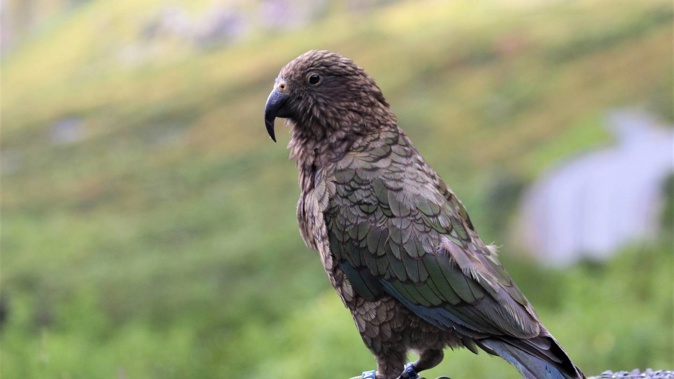
A wildlife vet is worried a strain of bird flu currently circulating the US and the UK could have a devastating impact on wild native bird populations, if it reaches New Zealand.
The strain of Avian Influenza A(H5N1) has been circulating throughout Asia since 2014 but has now spread to other parts of the world. In Europe 48 million birds have been culled in the last year in an effort to limit the spread, and in the United States 50m birds have died.
The disease has also recently been detected in Peru where nearly 14,000 pelicans and sea birds have died.
Massey University Professor Brett Gartrell who is a veterinary expert said this strain of Avian Influenza was highly infectious.
/cloudfront-ap-southeast-2.images.arcpublishing.com/nzme/4TMBJJCGBFADFCEMVVKNVZYTZU.JPG)
Avian influenza had been present in birds for a long time and in the past it mostly hit poultry breeders overseas but currently a “really scary variant of the avian influenza” was spreading and this global outbreak was unprecedented, he said.
“This current strain is different in that it is much more likely to spread between different species of wild birds and it’s much more likely to cause serious disease and death in those wild birds as well.”
That had allowed this strain of bird flu to travel around the globe in a way that had not been seen before, he said.
“The nearly 50 million birds that have died in the US, that’s just this year alone and it only entered the country the previous year.”
The risk of this strain of avian influenza causing illness in people was low, however it could if it mutated or changed, he said.
Wherever the disease occurred, health authorities “tended to take very strong precautionary principles around human health”, Gartrell said.
This avian flu epidemic was moving into areas where highly pathogenic avian influenza had not been seen before, although like all epidemics it would eventually run its course, he said.
/cloudfront-ap-southeast-2.images.arcpublishing.com/nzme/YDIGAE4XTVFXTFDLXZVKXDRR2E.jpg) Kereru a native wood pigeon. Photo/ Mark Mitchell
Kereru a native wood pigeon. Photo/ Mark Mitchell
Fears for endangered bird species if A(H5N1) gets to NZ
The birds that are being exposed to this avian flu have no immunity to it, he said.
“That’s our concern with New Zealand birds in particular, is that we haven’t had an avian influenza outbreak here for a very long time, we’ve got what we call low pathogenic avian influenza circulating in water fowl, but they’re not going to give our birds any immunity at all to this virus if it gets into the country.”
Gartrell said he feared for New Zealand’s more critically endangered bird species if the avian influenza did arrive here.
Internationally, measures around the avian influenza were to protect poultry industries and human health rather than wild bird populations, he said.
“So trying to control it in poultry flocks and things like that is about killing every infected bird and all of those in an area around it to try and stop the disease spreading.”
New Zealand was extremely lucky because of its geographically isolated position which had kept the virus out so far, he said.
“But I think we can’t get complacent about this because we do have migratory birds that come down from the Northern Hemisphere and we have seabirds that migrate across the circum polar regions of the Southern Hemisphere and if those birds can bring it here then ... it only takes one infected bird to get established in a country.”
It has been said that if a bird got avian influenza it would be too sick to migrate, he said.
The disease had a variable incubation period although generally the time between when the bird became infected and when it started to show symptoms was about a week, he said.
Ornithologists have discovered that shore birds could migrate from Alaska down to New Zealand in as little as seven days, he said.
A more likely risk was that the disease could leap-frog bird species to New Zealand, perhaps spreading from a species that moves through Europe, to one that moves into Australia and then into a species that moves across to New Zealand, Gartrell said.
Seabirds, shore birds were being seen in this outbreak, with migratory water fowl a major way that the virus had been moving through Asia and Europe, he said.
Although there were not any water fowl that migrated into New Zealand, if it came to this country via shore birds and then infected water fowl, ducks would spread it right around the country, he said.
The disease could also potentially enter the country via smuggled eggs, he said.
The key was to stop it getting here in the first place, he said.
/cloudfront-ap-southeast-2.images.arcpublishing.com/nzme/JODXOFAIEBJZWFZH43BJUWQSJY.jpg) Bird flu is highly fatal with a morality rate of 60 per cent in the past 15 years. Photo / 123RF
Bird flu is highly fatal with a morality rate of 60 per cent in the past 15 years. Photo / 123RF
MPI response
In a statement, the Ministry for Primary Industries (MPI) chief veterinary officer Mary van Andel said it was continually monitoring the situation overseas and New Zealand had never had a case of Highly Pathogenic Avian Influenza.
The risk of it arriving was still considered low and there were systems in place to ensure early detection if it were to arrive, she said.
That included summer surveillance programmes which screened ducks close to migratory bird sites and liaising with wildlife hospitals and Poultry Industry Association vets.
“Biosecurity New Zealand works closely with the Department of Conservation (DOC) in preparedness and awareness within New Zealand and on avian influenza screening kits. These kits would be deployed by DOC to sub-Antarctic Islands if an unusual mortality event was detected,” she said.
Gartrell agreed that MPI was doing good work, but said he would like to see them doing more surveillance “at that front line” by going out and sampling shore birds and seabirds.
The public should notify any mass bird deaths or strange behaviour to MPI’s Exotic Pest and Disease Hotline - 0800 80 99 66.
Gartrell said migratory birds would now start to come in to New Zealand after the breeding season in Alaska and the Northern Hemisphere.
Anyone working with the birds on the shoreline who noticed unusual deaths should be very proactive about calling the hotline as quickly as possible, he said.
What if it did get here?
The Ministry for Primary Industries said if highly pathogenic avian influenza was detected, Biosecurity New Zealand would be the lead agency to coordinate any response.
“Any actions such as movement control, vaccination or culling, would depend on the extent of the detection and whether it is found in wild birds, zoo/sanctuary/pet birds or poultry,” van Andel said.
Gartrell said if the disease arrived in New Zealand, based on overseas experience, the most likely approach would be to try and cull any infected birds and any birds that posed a risk of further spreading the infection.
There was no clarity on what a mass cull of infected birds would mean for wildlife populations, including endangered birds, he said.
There would be some extremely difficult decisions to make if the disease did arrive, and decisions would need to be made very quickly to stop the virus becoming established in the country, Gartrell said.
Take your Radio, Podcasts and Music with you









